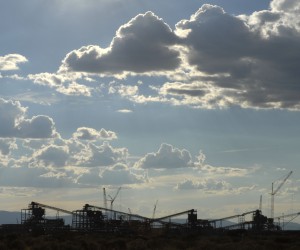Under heavy pressure from many different directions, mining companies operating in South Africa could potentially ease the burden by looking beyond the typical “triple bottom line” impact of their operations. Although this shift would take time and effort to achieve, it could enhance their prospects of long-term stability and business success, says Warren Beech, partner and head of mining at Hogan Lovells attorneys.
“The exploration and mining world is changing. This message could not have been clearer at the recent International Bar Association conference in Tanzania on mining in Africa,” he says. “In South Africa, the multiplicity of challenges facing the industry have collectively created a need for companies to review their approach to legal compliance. The time has come to move beyond standard compliance towards a new view of the triple bottom line.”
According to Beech, the three aspects of this new view are the so-called “social licence to mine”, substantive compliance with environmental laws, and dealing with the consequences of occupational injuries and diseases.
These three aspects have a direct bearing in one way or another on most of the eight main challenges currently facing the exploration and mining industry in South Africa, he says.
These challenges are the global financial crisis and its impact on global commodities demand, regulatory and legislative uncertainty, inadequate infrastructure (water, power, roads, rail and ports), labour uncertainty, health and safety, environmental compliance requirements, illegal mining and community activism.
Social licence is ever changing
Of the three elements of the new triple bottom line, the social licence to mine is the broadest, Beech says. “The social licence reflects the status of the relationship between the mining company and the community at any given point. It takes into account the full spectrum of potential impacts of exploration and mining activities, particularly in relation to host communities.”
What makes the social licence a particularly complex concept is that it is intangible, ever changing, and differs from community to community.
“Unlike regulatory authorisations, the social licence is not issued and is generally intangible,” Beech says. “It is always subject to the specific geographic location and the cultures, beliefs and expectations of the host community. What’s more, the social licence is dynamic and subject to ever-shifting societal expectations, which develop as time goes by.”
The best way for an exploration or mining company to gauge the state of its relationship with a given community is to analyse the status of its social licence from time to time. “An analysis will provide a useful indication of whether a company is meeting the community’s expectations, and the level of risk that the state of the relationship presents.”
Turning to the second aspect of the new triple bottom line, substantive compliance with environmental laws, Beech says this ties up with the challenge of operating in a climate of regulatory uncertainty.
No certainty yet on environmental authorisations
“Despite several amendments to the laws on environmental authorisations within the mining industry, uncertainty remains. In fact, it appears that the unintended consequence of the amendments is that there is even greater uncertainty about environmental authorisations.”
This is because the question of who has the final say on the environmental aspects of prospecting and mining is still a grey area despite the “One Environmental System” which came into effect on 1 September 2014. “The Minister of Mineral Resources will issue environmental authorisations and waste management licences for the industry, but the Minister of Environment Affairs will still be the appeal authority for environmental authorisations,” says Beech.
Adding to the uncertainty is that it is unclear whether or not there will be a transitional period for the requirement that banks, insurance providers and trusts must include provisions for rehabilitation, de-commissioning and remediation of negative environmental impacts. “This is an extremely onerous provision, and goes far wider than the financial provisions contained in the Mineral and Petroleum Resources Development Act (MPRDA) prior to its amendment.”
The confusion over the transitional period stems from an apparent contradiction between the newly amended National Environmental Management Laws and the amended MPRDA. Stakeholders, and in particular the mining companies, will need to take a far broader and in - depth approach to compliance in future to ensure that there is a proper understanding of the requirements and the commitment needed to achieve substantial compliance.
Reintegrating ill or injured employees into the workplace
The third aspect of the new triple bottom line, dealing with occupational injuries and diseases, is being brought to the fore through proposed legislative amendments, particularly to the Compensation for Occupational Injuries and Diseases Act.
“High-profile claims for occupational diseases, and the number of fatal injuries in the mining industry, appear to have prompted, to some extent, the proposed amendments,” says Beech.
The proposed amendments, which have not yet been presented to the Cabinet for approval, are far reaching and contain onerous obligations for reintegrating employees who have been injured or contracted occupational diseases into the workplace.
“There is significant emphasis on extending the responsibility of an employer in relation to occupational injuries and diseases,” Beech says. “This, together with the emphasis on the social licence and compliance with environmental laws, underlines the need for a fundamental shift in thinking in the exploration and mining industry. The concept of the new triple bottom line embodies that shift and could help companies safeguard their stability amid uncertainty.”






